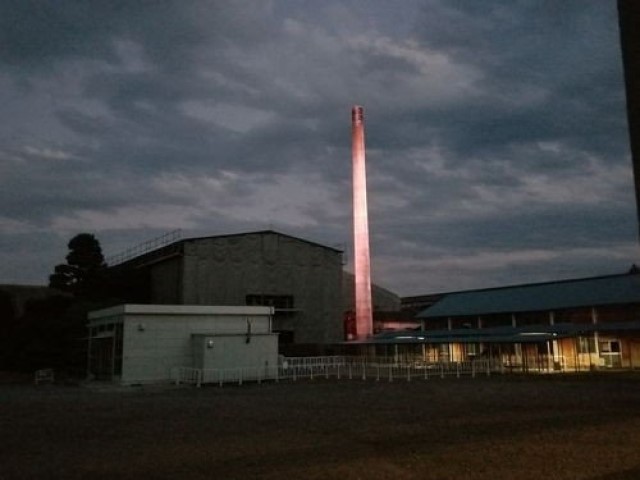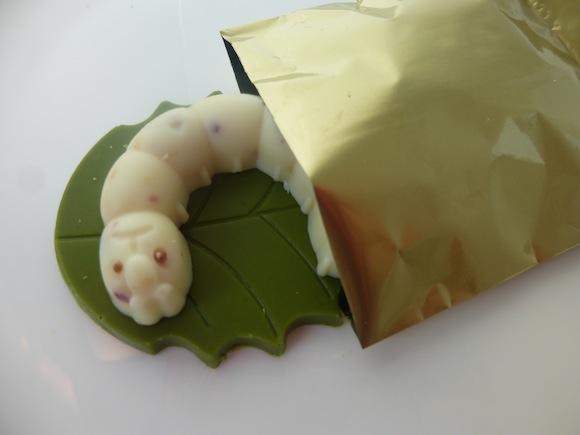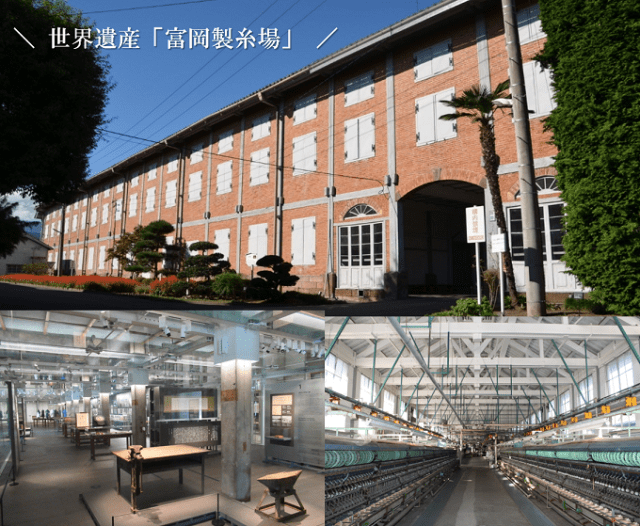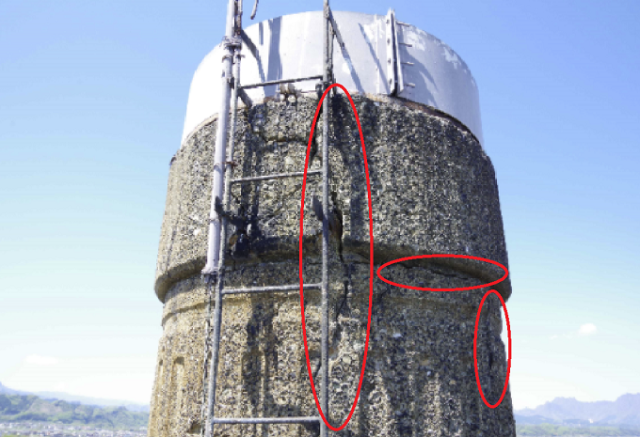
A silk mill that generated an immeasurable amount of money for Japan, is not getting the favor returned.
In the latter half of the 19th century, silk production worldwide was in a difficult situation. A disease that caused silkworms to stop producing silk spread in Europe and China’s own famous production was also disrupted by a major civil war. This set the stage for Japan to take over the global silk market, but at that time the technology for mass-production didn’t exist here.
Realizing the potential silk exports had, Japan partnered with France to create the nation’s first large-scale silk mill. The Tomioka Silk Mill began operation in 1872 and played a big role both in ushering in the Industrial Revolution in Japan and in helping the economy grow on an international level until it was decommissioned in 1987.
▼ The equipment inside has been updated over the years but the structures remain the same
The mill’s pivotal role in the country’s history has made it a certified Historic Site, National Treasure, and Important Cultural Property. It was also added to UNESCO’s World Heritage List in 2014. However, being the aging building it is, repairs and maintenance are crucial and the mill’s famous 80-year-old smokestack has been showing signs of fatigue such as large cracks forming at the tip.
This is normally a manageable problem, but because of the lingering pandemic and the mill’s relatively remote location in the middle of Gunma Prefecture, the number of visitors has plummeted, taking the needed tour fees with them. In addition, support from UNESCO and the government is limited and issued on a priority basis among the many heritage sites around Japan and the world, leaving the Tomioka Thread Mill mostly on their own to fix the chimney.
▼ However, like many World Heritage Sites, the Tomioka Silk Mill got the Google Street View tour treatment
So, they turned to crowdfunding to raise the 80,000,000 yen (US$700,000) needed for repairs. Those who donate 10,000 yen ($87) or more will receive a book that details the history of the mill, and people who donate over 100,000 yen ($875) will also get their name engraved on a plaque near the smokestack.
However, two weeks since the project began, only 70 people donated a total of 2,862,000 yen ($25,000), just 3.5 percent of the target. The lackluster start caused one Twitter user Awayuki (@awayuki_S) to sound the alarm online.
▼ “Hey, wait a minute!!?? Everyone who went to school must have written this place in a test at least once. Now ‘that’ Tomioka Silk Mill is crowdfunding but only got 63 supporters in two weeks!?!? This is your chance to have your name engraved at a World Heritage Site!?!?!?!?”
えっまって!!?? 義務教育を受けた全ての人が絶対一度はテストで書いたであろう""あの""富岡製糸場がクラウドファンディングやってるのに、2週間で支援者まだたった63人なの!?!? 世界遺産の敷地内に自分の名前が刻まれるチャンスなのに!?!?!?!?
— あわゆき (@awayuki_S) December 20, 2021
https://t.co/ns0GHrtWlX
A few people answered the call, and by the time of this writing the mill had received 3,175,000 yen ($27,800) in support from 84 people. It was a nice boost in a fairly short time, but still very far from the crowdfunding goal.
Perhaps more importantly, the word seems to be continuing to spread, with some people at least contemplating chipping in according to online comments.
“100,000 to get your name engraved at the Tomioka Silk Mill, eh?”
“The Tomioka Silk Mill that sells those realistic silkworm chocolates!?”
“That takes me back… I remember going there on a school trip.”
“It’s going to be hard to get 80 million yen.”
“Where’s Yusaku Maezawa when you need him?”
“They should get a YouTuber or VTuber to help.”
“If it’s such an important site then why isn’t tax money being spent to protect it?”
In response to that last question, it actually is tax money that is being donated to the Tomioka Silk Mill for the most part. This crowdfunding is being done through Japan’s Furusato Tax system. Under this program, a certain amount of money based on your income that is spent on something sold through Furusato Tax from a city other than your own will be deducted from your own city tax payments over the next year.
So essentially, the money that a tax-paying resident of Japan donates, up to a certain amount, is simply being re-routed from their own local tax payments. As a result, the donation would cost that person nothing at all in the end.
Luckily, there’s still plenty of time left in the crowdfunding campaign, which ends on 18 March, 2022. Perhaps some philanthropist or VTuber will come to their aid and help this site get the repairs it sorely needs. Even those who don’t care about historical sites will still want to help protect the chocolate silkworms they sell there.

They’re a different kind of national treasure.
Source: Furusato Tax, Tomioka Silk Mill, Hachima Kiko
Images: Furusato Tax (Unless otherwise noted)
● Want to hear about SoraNews24’s latest articles as soon as they’re published? Follow us on Facebook and Twitter!



 We try extra-unique souvenir sold by soon-to-be world heritage site — silkworm chocolate!
We try extra-unique souvenir sold by soon-to-be world heritage site — silkworm chocolate! Gunma-chan candy is adorable, probably as sweet as the mascot’s national championship
Gunma-chan candy is adorable, probably as sweet as the mascot’s national championship Gunkanjima and 22 sites of Japan Meiji Industrial Revolution up for World Heritage award
Gunkanjima and 22 sites of Japan Meiji Industrial Revolution up for World Heritage award Japanese city offering authentic handcrafted swords in exchange for “tax” payments
Japanese city offering authentic handcrafted swords in exchange for “tax” payments New Sputniko! music video presents modern take on traditional myth, inspired by real life science
New Sputniko! music video presents modern take on traditional myth, inspired by real life science How to order snacks on a Shinkansen bullet train in Japan
How to order snacks on a Shinkansen bullet train in Japan Demon Slayer: Kimetsu no Yaiba gets new roller coaster attractions and food at Universal Studios Japan
Demon Slayer: Kimetsu no Yaiba gets new roller coaster attractions and food at Universal Studios Japan New Nintendo Lego kit is a beautiful piece of moving pixel art of Mario and Yoshi【Photos】
New Nintendo Lego kit is a beautiful piece of moving pixel art of Mario and Yoshi【Photos】 Japan’s new difficult-to-drink-from beer glass protects your liver, but it’s a brutal experience
Japan’s new difficult-to-drink-from beer glass protects your liver, but it’s a brutal experience Hello, cosmetics! Clinique teams up with Hello Kitty this summer for first-time collaboration
Hello, cosmetics! Clinique teams up with Hello Kitty this summer for first-time collaboration Nintendo history you can feel – Super NES, N64, and GameCube controllers become capsule toys
Nintendo history you can feel – Super NES, N64, and GameCube controllers become capsule toys Which Studio Ghibli house would you most like to live in?
Which Studio Ghibli house would you most like to live in? Japan’s foreign population reaches historic milestone following largest-ever single-year surge
Japan’s foreign population reaches historic milestone following largest-ever single-year surge We check out the local flavors of the commonly confused Ome and Aomi areas of Tokyo in one day
We check out the local flavors of the commonly confused Ome and Aomi areas of Tokyo in one day Japanese gravure idol makes jaws drop with massive M-cup chest 【Pics & Videos】
Japanese gravure idol makes jaws drop with massive M-cup chest 【Pics & Videos】 “The most Delicious Cup Noodle in history” – Japan’s French Cup Noodle wins our heart【Taste test】
“The most Delicious Cup Noodle in history” – Japan’s French Cup Noodle wins our heart【Taste test】 Starbucks releases a cute Frappuccino and Unicorn Cake…but not in Japan
Starbucks releases a cute Frappuccino and Unicorn Cake…but not in Japan Kyoto Tower mascot termination reveals dark side behind cute Japanese characters
Kyoto Tower mascot termination reveals dark side behind cute Japanese characters McDonald’s Japan’s Soft Twist Tower: A phantom ice cream only sold at select branches
McDonald’s Japan’s Soft Twist Tower: A phantom ice cream only sold at select branches Yabai Ramen: What makes this Japanese ramen so dangerous?
Yabai Ramen: What makes this Japanese ramen so dangerous? Finally! Nintendo Japan expands Switch 8-bit controller sales to everybody, Online member or not
Finally! Nintendo Japan expands Switch 8-bit controller sales to everybody, Online member or not Japanese government wants to build luxury resorts in all national parks for foreign tourists
Japanese government wants to build luxury resorts in all national parks for foreign tourists To combat declining birth rate, Japan to begin offering “Breeding Visas” to foreigners
To combat declining birth rate, Japan to begin offering “Breeding Visas” to foreigners 10 things you should buy at 7-Eleven in Japan
10 things you should buy at 7-Eleven in Japan Studio Ghibli releases anime heroine cosplay dresses that are super comfy to wear
Studio Ghibli releases anime heroine cosplay dresses that are super comfy to wear Woman charged for driving suitcase without a license in Osaka
Woman charged for driving suitcase without a license in Osaka Studio Ghibli unveils My Neighbour Totoro miniature house model
Studio Ghibli unveils My Neighbour Totoro miniature house model Kyoto experiencing problems with foreign tourists not paying for bus fares, but not on purpose
Kyoto experiencing problems with foreign tourists not paying for bus fares, but not on purpose Fighting mild hunger with a Japanese soda that turns into jelly in the stomach【Taste test】
Fighting mild hunger with a Japanese soda that turns into jelly in the stomach【Taste test】 Studio Ghibli’s Howl’s Moving Castle tapestry unveiled in Japan for first time
Studio Ghibli’s Howl’s Moving Castle tapestry unveiled in Japan for first time McDonald’s new Happy Meals offer up cute and practical Sanrio lifestyle goods
McDonald’s new Happy Meals offer up cute and practical Sanrio lifestyle goods Sales of Japan’s most convenient train ticket/shopping payment cards suspended indefinitely
Sales of Japan’s most convenient train ticket/shopping payment cards suspended indefinitely Sold-out Studio Ghibli desktop humidifiers are back so Totoro can help you through the dry season
Sold-out Studio Ghibli desktop humidifiers are back so Totoro can help you through the dry season Japanese government to make first change to romanization spelling rules since the 1950s
Japanese government to make first change to romanization spelling rules since the 1950s Foreigner’s request for help in Tokyo makes us sad for the state of society
Foreigner’s request for help in Tokyo makes us sad for the state of society Ghibli founders Toshio Suzuki and Hayao Miyazaki contribute to Japanese whisky Totoro label design
Ghibli founders Toshio Suzuki and Hayao Miyazaki contribute to Japanese whisky Totoro label design Doraemon found buried at sea as scene from 1993 anime becomes real life【Photos】
Doraemon found buried at sea as scene from 1993 anime becomes real life【Photos】 Tokyo’s most famous Starbucks is closed
Tokyo’s most famous Starbucks is closed Princesses, fruits, and blacksmiths: Study reveals the 30 most unusual family names in Japan
Princesses, fruits, and blacksmiths: Study reveals the 30 most unusual family names in Japan A life-sized bust of Kenshiro from Fist of the North Star from Osaka is tax deductible!
A life-sized bust of Kenshiro from Fist of the North Star from Osaka is tax deductible! Ghibli Museum asking for donations to help pay for operating costs and repairs
Ghibli Museum asking for donations to help pay for operating costs and repairs Tokyo ward will give cosplay experiences as character of your choice in exchange for tax donation
Tokyo ward will give cosplay experiences as character of your choice in exchange for tax donation Tax donation program rewards people with exclusive seats to a spectacular aerial performance
Tax donation program rewards people with exclusive seats to a spectacular aerial performance Tokyo losing another iconic video game arcade as Ikebukuro landmark is closing for good
Tokyo losing another iconic video game arcade as Ikebukuro landmark is closing for good Ghibli Museum asking for donations from overseas fans to help it through hard times
Ghibli Museum asking for donations from overseas fans to help it through hard times Japanese designer kickstarts glamorous, comfy roomwear fashioned after yukata worn at hot springs
Japanese designer kickstarts glamorous, comfy roomwear fashioned after yukata worn at hot springs New clothing collection using upcycled meisen silk kimono aims to reweave modern culture
New clothing collection using upcycled meisen silk kimono aims to reweave modern culture Major Japanese bread producer begins selling croissants and cakes made from silkworms
Major Japanese bread producer begins selling croissants and cakes made from silkworms Gorgeous drinking bottles using kimono fabric now available with new designs and we want them all
Gorgeous drinking bottles using kimono fabric now available with new designs and we want them all Kyoto admits to paying celebrities 500,000 yen per tweet to talk about how great the city is
Kyoto admits to paying celebrities 500,000 yen per tweet to talk about how great the city is Japan celebrates birth of royal baby, brings Duke and Duchess of Cambridge to shop in Omotesando
Japan celebrates birth of royal baby, brings Duke and Duchess of Cambridge to shop in Omotesando Japan’s leading maker of giant cat heads needs your help!
Japan’s leading maker of giant cat heads needs your help! Winter walking event takes you around Totoro forest loved by Hayao Miyazaki
Winter walking event takes you around Totoro forest loved by Hayao Miyazaki New magazine focused on modern and casual kimono styles launched this month
New magazine focused on modern and casual kimono styles launched this month Bill Gates effect works its magic at Parasitological Museum in Tokyo
Bill Gates effect works its magic at Parasitological Museum in Tokyo
Leave a Reply